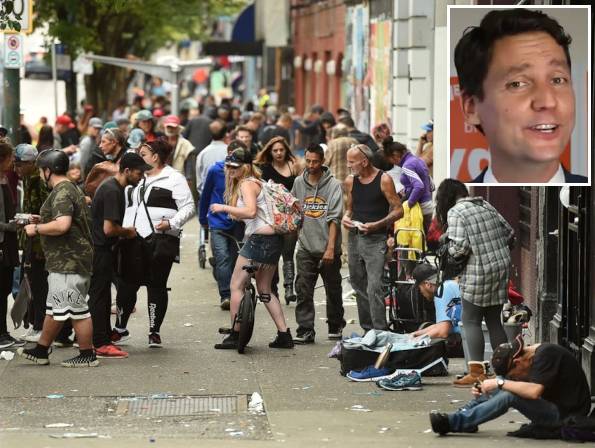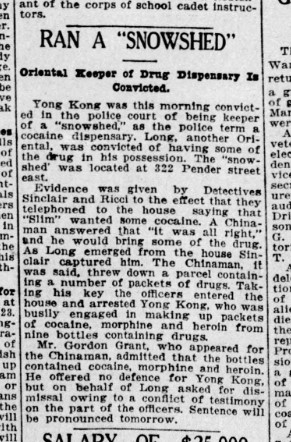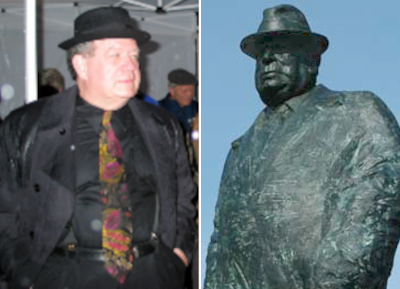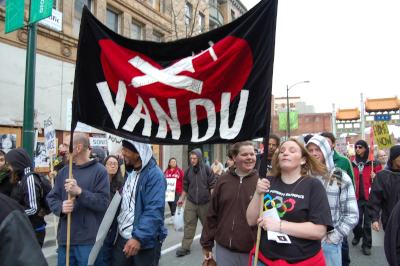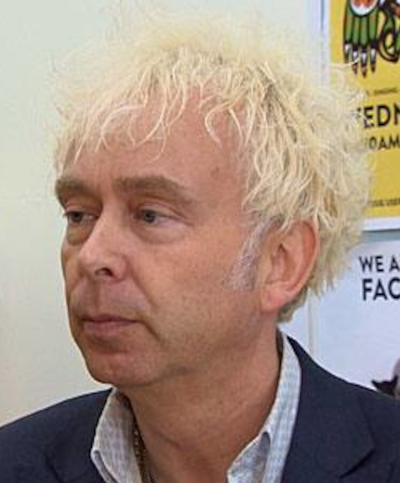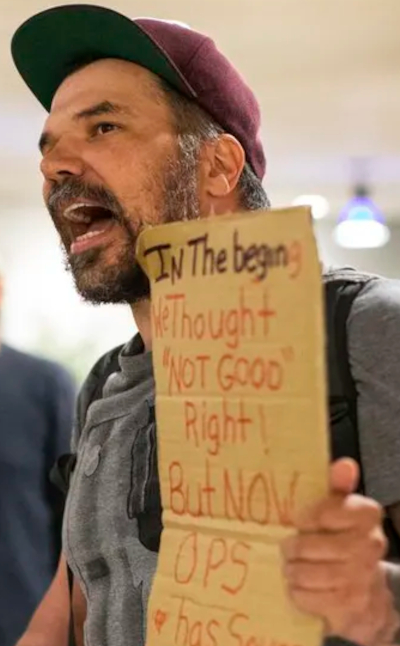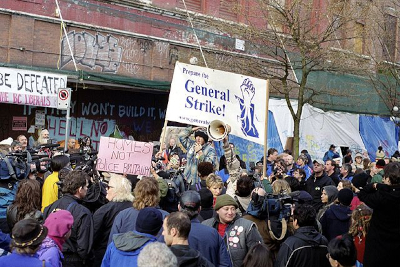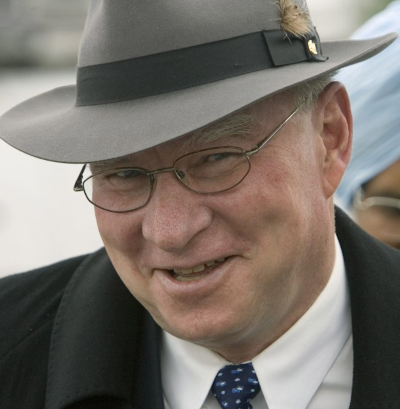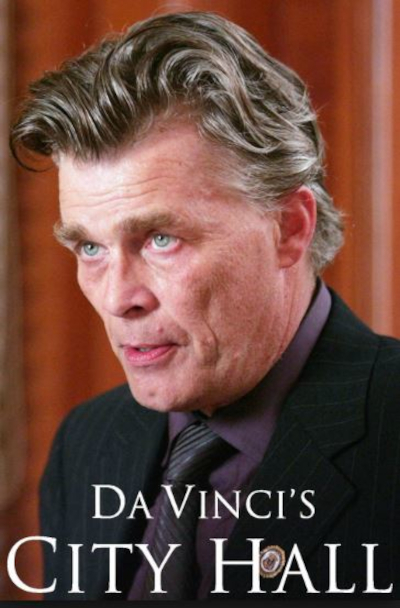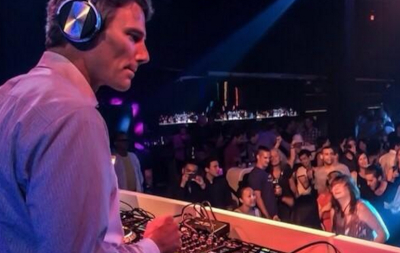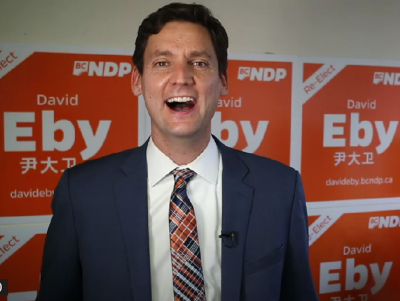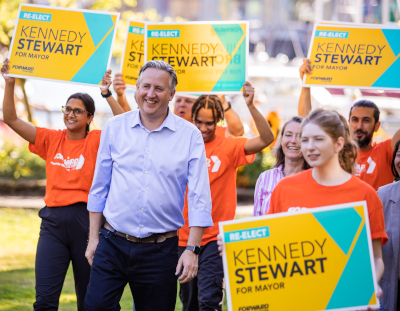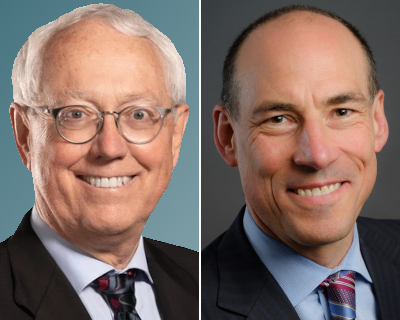
Reflections on Vancouver, British Columbia and other topics, related or not
The junkie/homeless hustle:
David Eby takes charge
As B.C.’s poverty pimp premier enters office,
here’s some background on Vancouver’s
contribution to Western collapse
Greg Klein | October 27, 2022
This article was revised on November 24, 2022, to include information about tent city organizers in other B.C. cities and B.C. Housing’s cover-up of the Atira Women’s Resources Society report.
Striking a self-righteous pose for a self-serving cause, David Eby
heads an industry that perpetuates for its own benefit a subculture
of wasted lives.
Incentives, support services and judicial leniency haven’t worked. So what’s David Eby’s new plan to deal with the junkie/criminal crime wave? More incentives, support services and judicial leniency. According to his professed beliefs, that puts Eby on the side of angels. It also puts him at the top of a growing empire combining government, a misdirected health care system and the poverty pimp industry. Those participants gain access to power and profit by managing an expanding caste of drug-addled dependants.
This dystopia within the social revolution’s larger dystopia comprises British Columbia’s distinct contribution to Western decline. As such, it deserves thorough historical study. In lieu of such work, here’s an outline of how ideological fashion and opportunism helped destroy a city and a great many lives, setting an example for others who hate normality and/or want to profit from its destruction.
Drug by drug,
Vancouver led the nation for intoxication
Above: An August 1917 Vancouver Province story uses
explicitly racial terms to recount a prosecution for cocaine,
morphine and heroin. Lower right: The Province reports
a “dramatic” heroin bust in March 1950.
It was Vancouver’s use of opium and derivatives that prompted Canada’s first criminal drug laws in 1908, with legislation that also addressed cocaine and patent medicines of uncertain narcotic content. Still, opium persisted in B.C. along with spin-offs like morphine and heroin. But an age-old standby, likely more widespread in Vancouver and its frontier than some other parts of Canada, was drinking—very heavy drinking, to an extreme rarely seen for generations now. (Here’s a B.C. logger’s account from about 1907.)
By the late 1940s heroin was taking prominence over other non-alcohol drugs. A March 1951 Vancouver Province series on the city’s “unsavory reputation as the addict centre of Canada” reported a steady increase in drug prosecutions, climbing from 120 in 1947 to 250 in 1950. Nearly all the 1951 Vancouver arrests so far had concerned heroin, compared with just a small percentage six years earlier and none in 1941, according to the paper.
A 1948 estimate cited by the Province said Canada had about 4,000 “criminal addicts,” slightly more than a third of them in B.C. and almost all of those in Vancouver. The paper referred to an unnamed senior cop who attributed 60% of Vancouver crime in 1951 to junkies.
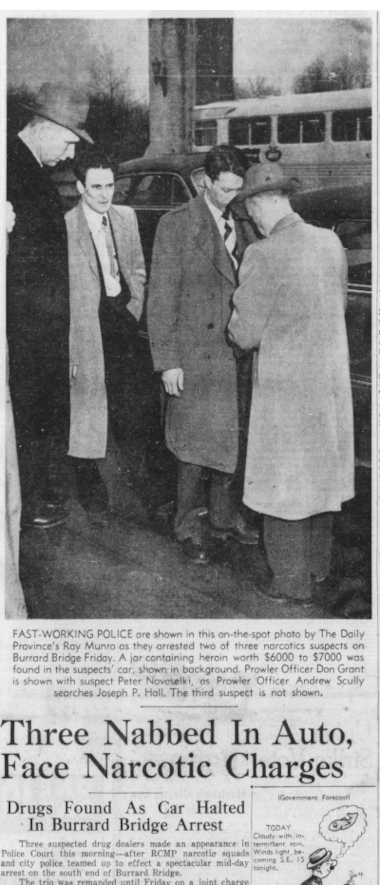
The city’s first recorded juvenile drug busts took place in 1950, the series added. But “marihuana is almost unknown here, although there are ‘rumbles’ about a limited traffic.”
Heroin probably diverted some addicts-in-waiting who would otherwise have become monumental boozers. But junkies and rubbies (down-and-very-much-out alcoholics) co-inhabited the Hastings-Cordova stretch at least into the 1970s.
Interestingly the two were “almost a race apart,” according to Peter Trower’s 1996 novel Dead Man’s Ticket. Although Trower wrote badly his characters and setting might portray with some accuracy young heroin users in the early 1950s who divided their time between coastal logging camps and zoot-suited East Van gangs.
As an older derelict demographic, rubby dubs made a pitiful spectacle, getting dangerously smashed on cheap and legal muck like bay rum (high-octane rubbing alcohol, men’s hair lotion and after-shave), aerosol Lysol and Chinese cooking wine. But less visible sots populated other neighbourhoods, from Renfrew Heights to Shaughnessy. Charles Jackson set his 1944 novel The Lost Weekend in 1930s New York, but his colossally wasted genteel protagonist was recognizable elsewhere.
For a while in the later ’50s, the smack Vancouverites had associated only with east end hoods gained a slightly loftier image thanks to beatniks and some of their jazz musician idols. Even so, junkies proved themselves a mess, ruining themselves as thoroughly as rubbies.
Late-1960s Vancouver saw needles and bay rum become almost parenthetical as hippies transformed the city. Vancouver became a world centre for LSD, marijuana and its byproducts, and other highs that became known as “recreational” drugs. All that transformed into a chemical street market leading to ecstasy and meth.
But Vancouver druggies, like those in Toronto and coastal U.S. cities, turned mostly to cocaine. Its local prominence began in the late ’70s among a wide social range, including upper-class snorters. Street-level users initially preferred shooting, often in combination with heroin or other additives.
Judicial leniency further encouraged the trend. Cops could do little about large-scale marijuana cultivation so grow-ops flourished. Prior to the 2012 legalization of cannabis in Washington followed by some other U.S. states, B.C. bud traded south of the border for guns and coke. Crack, especially, took a vicious toll.
And that was before opioids took over. Starting about 2012, almost every year’s phenomenal death rate was surpassed by the next. While not admitting any flaws in its own policies, B.C.’s government in August 2022 reported over 10,000 fatal ODs since declaring a public health emergency in April 2016.
The junkie/criminal class keeps growing.
B.C.’s the ideal locale
for the addiction lifestyle choice
Almost from the beginning, Terminal City provided a place to end up. Much has been said about the gentle winters, frontier proximity, seaport connections and edge-of-continent something-or-other that attracted both dreamers and losers. Strengthening the urge for stupefying escape might be the magnificent natural beauty that taunts lost souls with a sense of something unattainable.
Later, the city’s hippie-era protest culture attracted disproportionate numbers of deeply resentful inadequates. Expressing hatred of normality and delight in its destruction, they still arrive from across Canada and other countries to channel their emotions through politicized aggression. Some of them mix their activism with addiction. All of them support addiction inducements as large-scale social vandalism.
Of course those inducements, along with laissez-faire law enforcement, further encourage lifestyle migrants.
Provided by expansionist government and poverty pimp agencies, the encouragement doesn’t stop with addiction-enabling services like injection sites, rapid-response OD treatment, free food, free shelter, free health care and free legal representation, not to mention near-impunity from the law. In B.C. every junkie is, theoretically, in line for a lifetime of free housing, free income and free everything else.
All they have to do is devote their lives to getting high.
The underclass
becomes a dependent caste
Economics might explain the descent of Canada’s largely white working class but numerous and inter-related social trends created the junkie/criminal subculture. Some of them must result from a society in which upbringing, education, culture, role models and other factors breed confused, shallow and narcissistic personalities.
In this context it’s hard to ignore the superficiality of Canadian society since at least the post-WWII years. With a social spectrum now showing at one end elite flakery, at the other wastrel hopelessness, and in between complacency giving way to apathy, it wouldn’t be surprising if Canadians turn to drugs at a higher proportion than other societies.
Any look at addiction, however, becomes confounded by the sometimes related issue of untreated mental illness, a problem that took hold with faddish policies of the 1980s. Consequently it’s very difficult to determine which junkies do dangerous drugs because they’re insane and which junkies are insane because they do dangerous drugs.
Determining the reason for each individual would be difficult, but not impossible. Common sense suggests a combination of secure mental health hospitals and realistic prison sentences with psychiatric care could slowly unravel insanity from criminality. Conventional B.C. flakery rejects both those approaches. No one in prominence, least of all Eby, even proposes a viable plan to treat mental illness.
That seems to make the problem insoluble, a convenient conundrum for those who find it profitable.
Poverty pimps build a
tax-funded industrial complex
Some time around the late hippie era a politicized breed of street hustler barged into this city. The granddaddy of them all was Jim Green, a circa-1971 arrival who was probably the first to realize two factors: that Vancouver’s social justice issues could be exploited as a massive con, and that Vancouver would tolerate machinations that would be dangerous in the black and Hispanic inner-cities of his own country. Such was his influence that he could be responsible for renaming Skid Road (a term that might have originated in Vancouver) with the American appellation “Downtown Eastside.”
Vancouver had to immortalize
Jim Green’s poverty pimp pomposity.
Local journalists fawned over him despite his overt personal ambition, self-romanticizing pomposity, tax-funded affluence and even appearances of a protection racket. Quickly gaining strong political as well as media support, he built a lucrative career by essentially inventing his own tax-funded positions with power over tax-funded social spending. In his later years he made money by shielding real estate developers from SJW protests as long as proponents built housing for junkies.
Other American opportunists followed him, to the delight of Vancouver media. Just a few examples included incoherent, narcissistic serial traffic blockader and media darling Betty Krawczyk, and poverty pimps Doug King and Scott Bernstein, who’ve both moved from the Pivot Legal Society to other hustling agencies. The pro-pimp Coalition of Progressive Electors’ 2002 municipal election breakthrough won council seats for three Americans including Green, as well as placing an American on each of the parks and school boards.
Vancouver Sun reporter Pete McMartin (a big, big fan of COPE mayor Larry Campbell) and maybe other media courtiers actually feared PHS Society pimp Mark Townsend, one of the sociopathic arrivals from England.
Money came to pimps through the largely tax-funded groups they joined or founded, including among others Pivot, the B.C. Civil Liberties Association, the Vancouver Area Network of Drug Users and the PHS Society (aka Portland Hotel Society). The latter two give the impression that anyone in Vancouver with more nerve than intelligence can start a new tax-funded, self-serving racket.
Having transformed Vancouver into the Revenge
of the Inadequate, poverty pimp clients also serve
as poverty pimp footsoldiers.
VANDU does little more than advocate addiction. PHS demonstrates the enormous empire-building potential of the poverty pimp industry.
In 2014 a publicized audit from the previous year broke PHS secrecy to show wildly extravagant salaries, inflated expenses and exorbitant personal spending, along with nepotism and cronyism, from a tax-funded $28-million annual budget.
No single media source did justice to the scandal, but this article outlines some of the pimps’ outrageous spending, while this editorial notes PHS pimps refused to co-operate with the audit and routinely evaded accountability through lax bookkeeping as well as a “byzantine system of interlocking entities that defied meaningful oversight and invited conflicts of interest.”
Founded by Jim Green, the organization linked several well-connected Vancouverites including Jenny Kwan, an east end New Democratic Party MLA who was then provincial Housing critic, formerly a provincial cabinet minister and in future an NDP MP.
Married to PHS bigshot Dan Small and a beneficiary of PHS-provided luxury travel to England, Austria and Disneyland, Kwan defended the organization prior to her belated and unconvincing contrition. Further support for the brazenly corrupt clique came from Vancouver East NDP MP and former Coalition of Progressive Electors councillor Libby Davies, senator and former Vancouver COPE mayor Larry Campbell, and former NDP premier and Vancouver mayor Mike Harcourt.
The 2013 audit ranks as a blue moon event, but mostly for its public disclosure. Showing the BC Liberals also supported pimp corruption, the Crown corporation BC Housing successfully fought Freedom of Information requests for results of its 2002 PHS audit, itself a rare occurrence. A 2003 Vancouver Courier feature raised disturbing questions about PHS spending, competence and cliquishness. Yet until 2014 funders at all levels of government showed indifference. So did other media. The 2003 exposé was written by David Carrigg, then a fairly recent arrival from Australia who seemed to lack the courtier tendencies of B.C. journalists.
Even a dopey-looking foreign fuck like PHS pimp Mark Townsend
could get away with pillaging hundreds of thousands
of dollars from tax money intended for the poor.
Although the 2013 audit raised additional questions, the scandal quickly blew over. Neither the governing BC Liberals, let alone the opposition NDP with Kwan as Housing critic, pushed for further investigation. PHS pimps faced no criminal charges or demands for restitution. They even got severance packages determined by equally disgraced PHS directors.
The industry grows as bully boys
and girls wage war on normality
Doing grunt work for the poverty pimp industrial complex are deeply resentful Angry Child activists. Applying religious fervour to asinine rhetoric and mob bullying, they channel their emotions through political aggression but only push officially approved causes. Among them are free homes, incomes and other inducements for junkies. Although post-’60s stereotypes typify protest culture in a number of Western countries, their Vancouver prevalence helps characterize this city as the Revenge of the Inadequate.
One example is Ivan Drury, who came to prominence around 2000 with the Anti-Poverty Committee. Closely connected with PHS and Pivot, this incoherent and thuggish Vancouver mob included middle and upper-middle class opportunists with generous tax-funded salaries and homes from the Downtown Eastside Residents Association founded by Jim Green.
Stunted personality and cognitive development hardly impedes
Ivan Drury’s service to the poverty pimp establishment.
Drury pops up regularly as a spokesperson, at least sometimes on salary, for different pimp ops that harass individuals, businesses and entire neighbourhoods. After years of media attention in Vancouver he branched out to organize tent cities in Maple Ridge, Victoria, Nanaimo and other B.C. locations. No one publicly questions the funding sources that pay for him, his travels and his other expenses, like filling newly created junkie camps with newly arrived junkies transported via chartered bus.
That was one of the tactics behind Nanaimo’s onslaught of junkie crime. Suddenly and deliberately imposed with the first local tent city in summer 2018, the community-wrecking campaign has attracted at least several hundred and probably thousands of additional junkies. It was, as Angry Child behaviour shows, a hate crime against normality.
Other opportunists joined in. Just one example is the Nanaimo Area Network of Drug Users, a spin-off by grant-seeking VANDU founder Ann Livingston.
But apart from indulging their animosity, Angry Child activists serve other pimp ops higher up the industrial complex. Nanaimo’s junkie influx expanded local tax-funded housing societies, to the benefit of management salaries.
Revealed so outrageously by PHS, the benefits to housing societies need not stop there. An all-too-vague report about Vancouver’s Atira Women’s Resources Society just hints at another case that might even go beyond massive money mismanagement. Leaked in November 2022, four years after completion, the report’s up-to-now secrecy implies wide-scale cover-ups by the province’s chief pimp benefactor, BC Housing.
As BC Housing’s chief pimp beneficiary, Atira remains just one of myriad SJW groups in B.C. funded by taxpayers. There’s no accounting for the billions of dollars bestowed on them annually by different levels of government.
Pimp ops like Pivot and the BCCLA, meanwhile, allow phony legal activists to manipulate social issues while sucking up to power. No one’s been more successful in that gambit than David Eby.
Union power moves
from the private to public sector
Labour funding might not mean much to politicians anymore. But there’s still union in-kind support and union get-out-the-vote efficiency, not to mention union influence on media. The NDP and municipal “progressives” can only slather for more.
But in B.C. the once-powerful industrial unions now matter little. Power rests with the public sector. That helps explain the NDP’s transformation from working class issues to middle class flakery.
The province’s big-government boosters see tremendous expansion potential in the junkie/criminal subculture. A wide range of support services from misdirected health care, expensive but ineffective mental health care, junkie-prioritizing housing societies and numerous other junkie-enabling ops, as well as political agitators, provide public sector unions with their greatest growth.
Even when government outsources these services to tax-funded contractors or other agencies, their employees normally have to hold membership in government-associated unions. Just two examples are the 100,000-strong CUPE BC, which calls itself B.C.’s largest union; and the 80,000-strong B.C. General Employees’ Union (representing PHS “workers” among other pimp ops), formerly called the B.C. Government Employees’ Union and considered B.C.’s most powerful union.
The organized occupations vary widely. Some are obvious poverty pimp hustles and have included highly paid CUPE members at the Downtown Eastside Residents Association and BCGEU members at PHS getting tax-funded housing intended for the poor. Other groups can be ambiguous, like the housing society management who build empires that fatten their salaries and prioritize junkies for freebies. Others might actually benefit society.
But some drag down a noble profession. Government-funded, unionized injection sites require their nurses to help virgin-vein novices shoot their very first hit of rapidly addicting, psychosis-inducing drugs.
Junkies become Vancouver’s blacks
Around 1999 or 2000 Vancouver media, possibly led by new Vancouver Sun managing editor Patricia Graham, began a campaign of sob stories portraying junkies as helpless victims. That was more than a decade before natives became the Canadian elite’s favourite special needs group. Just as some middle class Toronto whites gratify themselves by expressing condescension towards blacks, middle class Vancouver whites took to boasting about their compassion for addicts. “Society’s most vulnerable” became a euphemism for sociopathic criminals.
That solicitude was taken up by junkies themselves. Encouraged by journalists and pimps, addicts often express self-pity, self-righteousness and a sense of entitlement.
As junkies came under Vancouver’s distinct brand of political correctness, a taboo banned any suggestion that they can be held responsible for their own behaviour.
The junkie agenda overtakes Vancouver politics
Playing up addict victimhood, tax-funded and unionized poverty pimps
organized the Woodward’s occupation during Vancouver’s 2002
election campaign. Extensive media coverage added a sense of
urgency to the junkie agenda of pimp-friendly Larry Campbell
and his pimp-infested COPE. The junkie agenda continues
as a mainstay of Vancouver politics.
In 2002 junkie pity became the central theme of a municipal election. While unionized tax-funded activists organized a highly publicized occupation of the prominent Woodward’s building and surrounding Hastings-Cordova-Abbott streets, a pro-junkie media campaign backed the suddenly pro-junkie Larry Campbell. As the figurehead “leader” of the Coalition of Progressive Electors, he and COPE’s Communist/NDP alliance trounced the formerly dominant, supposedly “right-wing” Non-Partisan Association.
Imagining junkies to be victims of oppression, Vancouver’s Enlightened Class took its moral preening to the polling stations. Some of Vancouver’s unenlightened might have also voted pimp, in desperate hope that the party’s Four Pillars program would mitigate the increasing disorder. By the early 2000s wide-open drug use, drug dealing and drug-related crime had spilled well beyond their Hastings-and-Main epicentre to other parts of the city. But only one pillar—harm reduction in the dubious guise of official injection sites—was ever implemented. So much for prevention, treatment and legal enforcement.
Repellent as it was, this laughing sneer gave Larry Campbell a
relatively flattering visage compared to his reputed behaviour.
Yet his media groupies were many.
Campbell, a big, fat, obnoxious ex-cop of a middle-aged white man who reportedly used his size and weight to intimidate others, should have been an irresistible target for what later became the Ford/Trump treatment. But journalists loved his ass, not to mention his professed concern for junkies. No one in media expressed that more fulsomely than Vancouver Sun staff, especially municipal correspondent Frances Bula.
Campbell’s recruitment by COPE and his ensuing media popularity seem inexplicable without considering Da Vinci’s Inquest, a TV drama that CBC had been dragging out since 1998. According to its hype, the series featured a sensitive coroner who fought injustice against the downtrodden. The scripts were supposedly based on Campbell’s time as a coroner but it’s just about impossible to reconcile the TV portrayal with such an obviously self-serving, badly behaved jackoff. No matter, journalists, like other really average people, often confuse TV with real life. As far as most of them were concerned, self-aggrandizing loudmouth Campbell was caring, compassionate Da Vinci.
Vancouver media mistook this over-torqued
Grade B persona for Larry Campbell.
Intensifying the impression was a spin-off series, Da Vinci’s City Hall. Concurrent with Campbell’s last months in office but probably with greater longevity assumed, CBC changed his TV alter-ego to a newly elected Vancouver mayor. A promo described him this way:
Da Vinci takes City Hall by storm, questioning the status quo and advocating change at every sensible turn. As a man of the people, by the people, he’s always looking out for his constituency, despite any road blocks the “old boys’ network” throws in his path.
That gushing Bula-ish blurb resembled Campbell’s media coverage.
The show even had Da Vinci advocating Campbell’s (actually his party’s) election platform. Another promo, indistinguishable from COPE campaign material, had the TV character pushing for “safe injection sites for the troubled drug dependent population in the Downtown Eastside.”
The show expired after just 13 episodes. But by that time Campbell had already moved onto bigger and better unearned glory. Just two and a half years after he became mayor, Ottawa granted him a Senate sinecure.
His superficiality might not have withstood electoral challenge but the NPA had resorted to me-too politics. Wannabe-mayor (and future premier) Christy Clark considered the faux Da Vinci unbeatable. So she and her brother Bruce used their federal Liberal connections to move Campbell into his pampered exile.
Despite all that, Clark lost the NPA nomination to Sam Sullivan. The subsequent 2005 mayoralty contest was pimp godfather Jim Green’s last, and nearly successful, attempt to get elected. (He had been elected councillor with Larry Campbell’s COPE in 2002, and as a 1996 MLA candidate came a close second to future BC Liberal premier Gordon Campbell.) Sullivan defeated Jim Green by 3,747 votes while a candidate listed as James Green got 4,273 votes. Sullivan gave at least a little support to James’ campaign. The degree remains a matter of controversy.
Sullivan’s junkie voyeurism (paying for one addict’s drugs; watching a drug deal go down and allowing its customer to use the product in his vehicle) seemed a bit weird even by Vancouver standards. That probably contributed to the NPA’s in-house coup. But in 2008 Sullivan’s NPA successor, former councillor Peter Ladner, lost badly to a flaky but slick party called Vision Vancouver.
That was doubly unfortunate. Besides another pro-junkie victory, Ladner’s resounding defeat silenced an exceedingly rare mainstream critic of poverty pimps.
Pro-junkie rhetoric reaches a deadly zenith
with the Vancouver Doctrine of Predestination
Maybe more than his predecessors, three-term Vision mayor Gregor Robertson encouraged the province’s massive OD death toll.
Robertson really pushed the Vancouver Doctrine of Predestination—that junkies are born to be junkies, therefore they can’t be anything but junkies. He also pushed the notion that a lack of free housing causes drug addiction. Never mind the contradiction, Robertson’s rhetoric was often confused and emotional.
A Grim Reaper with pretty boy features,
Gregor Robertson encouraged junkie fatalism,
not to mention junkie fatalities.
He failed manifestly in his oft-repeated promise to eliminate homelessness. With an obviously unrealistic commitment in the first place, he further stymied success by pushing drug-friendly programs that attracted yet more dysfunctional people to Vancouver.
Robertson’s one success, of sorts, was to solidify the new alliance of so-called “leftists” with big-time property developers. As foreign money priced Vancouverites out of their own real estate and rental market, working people struggled to avoid homelessness themselves. Vision’s previously unlikely affiliation robbed the NPA of its traditional developer/speculator backers while maintaining enough SJW pretence to maintain “progressive” support.
By 2018 Robertson left politics and his legacy of massive unaffordable development contrasting with wide-open junkie squalor. The Tides Foundation reportedly helped finance his rise to power. Maybe the Naloxone industry did too.
David Eby becomes the poster boy
of poverty pimp ambition
Just as Vancouver’s American poverty pimps conspicuously avoided the black inner-cities of their own country, Ontarian Eby forsook nearby Toronto for a career on the coast.
He first came to Vancouverites’ attention in 2005 as a lawyer with the Pivot Legal Society and then the B.C. Civil Liberties Association, the two most prominent legal hustles in the province’s poverty pimp industry.
Having built his career as a phony social justice warrior and
autocratic cabinet minister, B.C.’s new premier David Eby plans to
encourage an ever-expanding caste of drug-addicted dependants.
Initially his Pivot work on police accountability showed some limited merit. But Eby focused on the alleged misconduct of individual officers while ignoring the secrecy, unaccountability and blatant cover-ups of B.C.’s Office of the Police Complaint Commissioner, an ethically corrupt “oversight” agency backed by the BC Liberals, NDP and Law Society of British Columbia. (Pivot pimps Scott Bernstein and Doug King took part in a Vancouver police/OPCC cover-up of gratuitous cop brutality against a disabled native woman.)
Eventually Eby refused to even discuss cop misconduct, consistently dodging media questions by vaguely advocating greater services for the mentally ill. His tactics avoided conflict with elites while urging the expansion of public sector unions and poverty pimp organizations.
B.C.’s typically credulous journalists fell for his SJW stance. They didn’t even notice when he evaded questions.
Oddly enough, Vision Vancouver rejected Eby’s bid to run as a council candidate in 2008. He then ran provincially as an NDPer, narrowly losing to the BC Liberals’ Christy Clark in 2011 but defeating her (by then premier) in 2013. (This happened in Point Grey, one of Vancouver’s wealthiest neighbourhoods, the location of Jim Green’s close-second to Gordon Campbell and home to several high-profile “progressives” including “east end” member of parliament/PHS princess Jenny Kwan.)
Eby quickly rose to such prominence in the NDP that future leader and premier John Horgan reportedly found him intimidating. Once in government as attorney general, he actually seemed to take a valid stand—once. He called a long-overdue inquiry into money-laundering.
Manifest as it was, the problem nevertheless had been brushed off by the previous BC Liberal government. But, bringing to mind Eby’s faux activism as an SJW, his appointed Cullen Commission downplayed important aspects of the problem and ignored others. Among them was the participation of Chinese fascists and their Canadian collaborators in the NDP and other branches of the provincial and federal elite.
Showing the advantage of the provincial Housing ministry to big government and the poverty pimp industry, Eby added it to his Attorney General ministry in an unprecedented double portfolio. The province’s BC Housing corporation prioritizes grants of free and subsidized homes on the basis of identity group membership including junkies. Young, apparently able-bodied agitators can also get priority.
Just one curious aspect of the expansion of BC Housing and its pimp agencies concerns the prices—far above market value—that the ministry pays for hotels, which it converts to junkie housing. Eby plans to increase the ministry’s annual budget from $2 billion to $9 billion over the coming decade.
As Housing minister Eby pledged to impose more junkie homes on communities by overriding municipal decisions and local bylaws, and threatened to establish a tent city in Penticton. He warned that BC Housing had 1,000 tents and sleeping bags ready for just such an opportunity.
After Horgan’s October 2022 retirement Eby succeeded him, but only after having the party disqualify his sole leadership rival, Anjali Appadurai. Eby’s side alleged that her campaign broke party rules by signing up provincial Green Party members. Eby got his way, cementing his power.
Eby faces his first serious challenge
as junkie crime threatens political complacency
Just prior to taking the premier’s office, however, Eby seemed to be losing his manipulative grip on the junkie/homeless hustle. Crime and disorder had by that time thoroughly transformed B.C. cities and towns.
Assaults, stabbings, shootings and machete attacks increasingly accompanied B.C.’s surging wave of thefts, break-ins, harassment and sometimes outright chaos. Neighbourhoods in just about any area of all cities and towns could be affected, as could rural areas.
At the September 2022 Union of B.C. Municipalities convention some politicians finally broke rank with establishment flakery. Even Lisa Helps, then-Victoria mayor and normally an astounding purveyor of officially condoned weirdness, brought to light 10 people who wracked up 1,385 police incidents in two years. One guy accounted for 284 incidents, 55 charges and 22 separate convictions over that period.
Kennedy Stewart’s crime-denying complacency cost him
re-election. But Eby seems confident that the pro-junkie
status quo remains entrenched.
A dissenter was Kennedy Stewart, a former NDP MP who very narrowly won the 2018 Vancouver mayoralty after Robertson’s departure. At the outset of the October 2022 municipal campaign, Stewart sounded smug as he insisted crime wave data was simply “anecdotal.” Eby actively campaigned on Stewart’s behalf.
Eby also commissioned a quick pre-election study on crime. Of the co-authors, Doug LePard is a well-connected former Vancouver senior cop who’s benefited from a number of post-retirement establishment appointments; Amanda Butler is an academic activist who refers to criminals as “justice-involved people.” Predictably, they concluded that criminals can’t be held responsible for their actions; instead they need lots and lots of support services. Some B.C. municipal candidates agreed, others didn’t. Election results brought victories and defeats on both sides.
But the most dramatic loss was Stewart’s, who made history as Vancouver’s first incumbent mayor to lose in 42 years. Ken Sim’s newly formed A Better City party elected all its candidates largely on the promise to hire an additional 100 cops and 100 mental health nurses to deal with crime and disorder.
Sim’s promise got the backing of the Vancouver Police Union, showing an ironic reversal of B.C. poverty pimps’ American-imitating Defund the Police campaign. To a degree it also showed a poverty pimp tactic—to benefit from a problem without treating it. Cops can do little except speed up Canada’s catch-and-release justice system. Nurses can do little outside an institution. The difference with poverty pimps, of course, is that the extra cops and nurses would likely do at least a bit of good.
Two of Eby’s flunkies, newly appointed Attorney General
Murray Rankin and assistant deputy AG Peter Juk, defend
the courts’ catch-and-release system with Eichmannian banality.
Then, three days after the municipal elections, a Burnaby Mountie was stabbed to death, apparently by a tent-dwelling serial catch-and-release criminal. Even so, Eby has indicated his determination to maintain judicial leniency, block involuntary mental treatment, offer incentives to the junkie lifestyle and provide yet more supportive services on a scale greater than ever before.
That gives an ever-larger government and poverty pimp industry an ever-larger caste of drug-addicted and often criminal clients.
July 2024 update: Addiction and related crime continue to escalate, with no effective response from any level of government. As an October provincial election nears, David Eby’s NDP has flip-flopped on drug decriminalization but still expands junkie lifestyle inducements and poverty pimp benefits.
